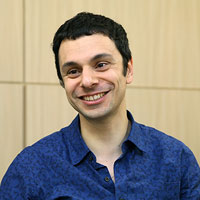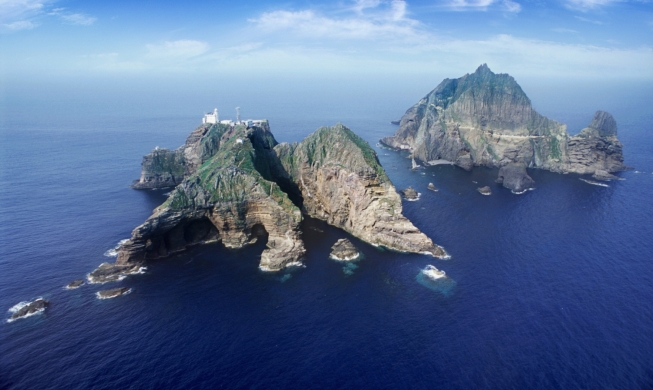
By Tim Alper
Korea’s history of art is not full of great and sudden revolutions or movements, like art in Western Europe. Nor is it, strictly speaking, evolutionary. Rather, it's a story of gentle yet incessant and often cyclical flux.
Until A.D. 660, the Korean Peninsula was divided into three kingdoms. Each had its own network of international influences, and its own distinct set of philosophical values, all of which are reflected in pre-918 art.
Baekje, in the southwest, maintained close relations with ancient Chinese kingdoms. It was also devoutly Buddhist, so elements of both Buddhist spirituality and medieval Chinese philosophy are strong themes in Baekje’s ethereal artworks.
The artists of southeastern state Silla, the last of the three kingdoms to adopt Buddhism as the national religion, preferred mystical, interpretive and fantastic themes. A recently discovered 6th-century Silla painting, for example, shows a mythical horse-like creature dancing to otherworldly melodies.
Goguryeo in the north was an expansive military state. This fact is clearly reflected in its art, which often depicts armed horsemen riding into the hunt or into combat.
Buddhist Goryeo rule in the 10th Century brought a significant change to Korean art. Instead of painting on parchment, paper or canvas, Goryeo artists were encouraged to get out and decorate the country’s blossoming network of temples and shrines.
Goryeo priests were keen to portray the Buddha’s teachings as vivid, life-embracing and enlightening, so encouraged painters to decorate temples with bright, fanciful and colorful scenes from the Buddha’s life, a style of temple-decoration that still survives to this day.
It was only when the neo-Confucian Joseon took power in 1392 that what is now called Hangukhwa, Korean traditional painting, came into being. In many ways, this style was the polar opposite of Goryeo art, and possibly even set itself out to be everything that Goryeo painting was not. Out, for example, went Buddhist themes. Out, too, went color. Hangukhwa artists produced mainly monochrome works.
Art became the preserve of the seonbi, a scholarly class that rose to dominate both national politics and high society. The seonbi chose Korea’s dramatic mountainous landscape as their primary subject. Gigantic hills and rocky valleys dominate their work. They also liked to adorn their paintings with poetry, inspirational quotes or philosophical musings, written in calligraphic freehand.
This period saw the rise of court painters like An Gyeon (안견, 安堅) in the 1400s, famous for his portrayal of mist-covered mountaintops, wind-ravaged vegetation and small human settlements, dwarfed by their unforgiving natural surroundings.
In the later Joseon period, however, Korea’s great artistic auteurs came to the fore, exploring themes that had not been touched upon since the Three Kingdoms period.
Kim Hong-do (김홍도, 金弘道), born in 1745, filled his works with Goguryeo-like dynamism. In his paintings, landscape took a back seat, and people moved into the foreground. His art depicts hungry workers seated on the ground devouring meals and braying crowds at hectic wrestling matches.
Meanwhile, Sin Yun-bok (신윤복, 申潤福), born in 1758, filled his work with subtle color and injected a fantastic, hyperreal element that had not been seen since Silla and Baekje times. His subjects were considered outrageous at the time: half-naked women bathing in rivers, and adulterous couples in midnight encounters under the light of the ghostly crescent moon.
The end of Joseon saw a widespread democratization of painting. As feudalism declined, the seonbi lost their grip on the art scene. What followed was the rise of minhwa, or folk painting, and an artistic power shift from the educated elite to ordinary people. Instead of calligraphic texts and monochrome mountains, minhwa painters drew bright and colorful animals, much like the creatures shown dancing at the feet of the Buddha on Goryeo temples.
However, it would be wrong to think Hangukhwa has become obsolete in modern times. It remains a powerful force, and the painters that continue to develop it are highly regarded in the artistic community.
More importantly, the makers of TV soap operas seem as enthralled now as they ever were with Joseon and its art, with viewers around the world just as captivated. Many dramas feature Hangukhwa artists as characters, including "Painter of the Wind" (바람의 화원), a fictionalized retelling of the life of Sin Yun-bok, which won the Asian TV Series Special Award at the 2010 Shanghai Television Festival.
This year also began with the SBS drama "Saimdang, Light's Diary" (사임당 빛의 일기), exploring the life of female Hangukhwa painter Shin Saimdang (신사임당, 申師任堂), a notable 16th-century figure.
Hangukhwa may no longer represent the mainstream of Korean art, but its influence on modern Korea is arguably just as strong now as it ever was.
Tim Alper is a writer and columnist, originally from the U.K., who has lived in Korea for more than ten years.
Most popular
- Grammy-winning producer calls Suga of BTS 'amazing artist'
- 'Universal love, family' themes fuel success of 'King of Kings': director
- Council sets minimum hourly wage in 2026 at KRW 10,320
- Expansion of foreign app system raises tourist convenience
- Nat'l population diversity rose nearly 8% from 2018-22: study
